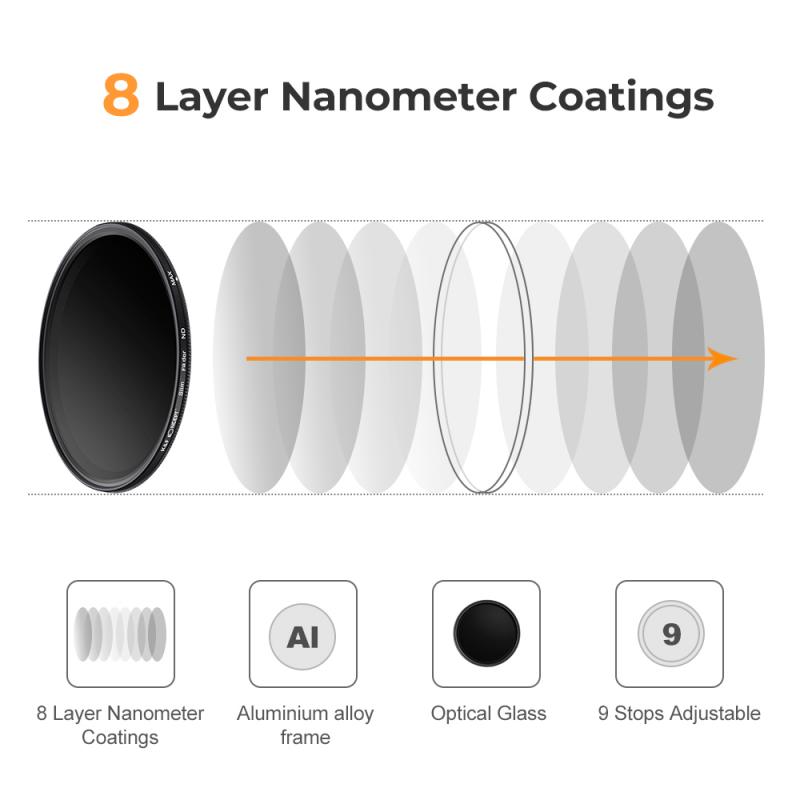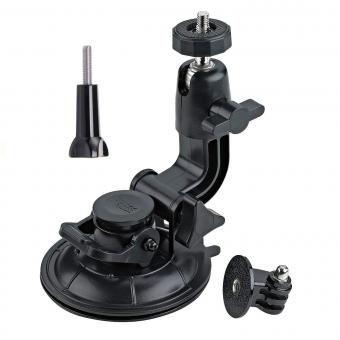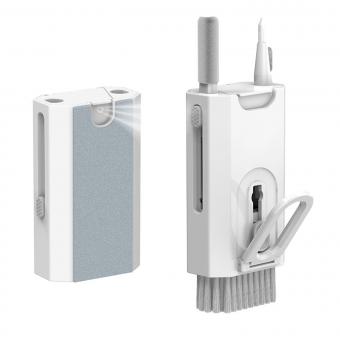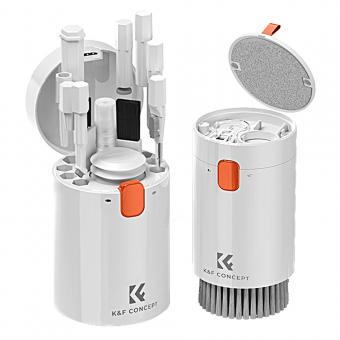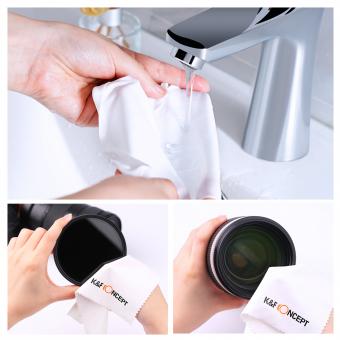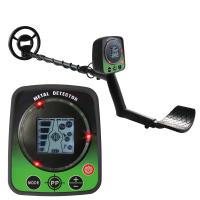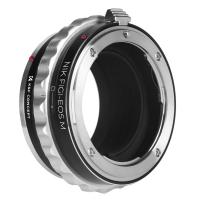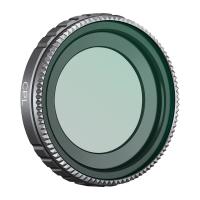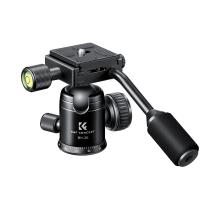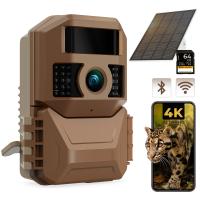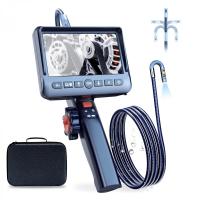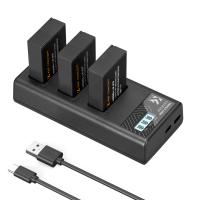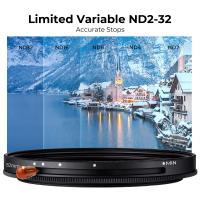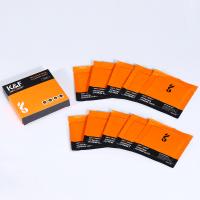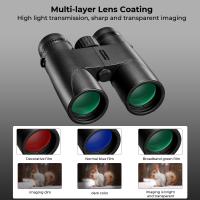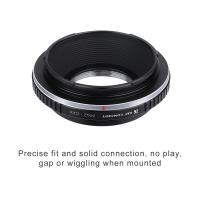How To Clean Your Camera Filters ?
To clean your camera filters, start by using a blower brush or compressed air to remove any loose dust or debris. Then, gently wipe the filter surface with a microfiber cloth or lens cleaning tissue. If there are stubborn smudges or fingerprints, you can dampen the cloth or tissue with a small amount of lens cleaning solution or isopropyl alcohol. Be careful not to apply too much pressure or use abrasive materials that could scratch the filter. After cleaning, inspect the filter for any remaining dirt or streaks, and repeat the process if necessary. It's important to clean your camera filters regularly to maintain their optical quality and ensure clear, sharp images.
1、 Types of camera filters and their functions
Types of camera filters and their functions:
Camera filters are essential accessories that can enhance your photography by manipulating light and achieving various creative effects. Here are some common types of camera filters and their functions:
1. UV Filters: UV filters primarily serve as lens protectors, shielding your lens from scratches, dust, and moisture. They also reduce the bluish cast that can occur when shooting in bright sunlight.
2. Polarizing Filters: Polarizing filters reduce glare and reflections from non-metallic surfaces such as water or glass. They also enhance color saturation and contrast, making skies appear bluer and clouds more defined.
3. Neutral Density (ND) Filters: ND filters reduce the amount of light entering the lens without affecting color balance. They are useful in situations where you want to use slower shutter speeds or wider apertures, such as capturing motion blur in waterfalls or achieving shallow depth of field in bright conditions.
4. Graduated Neutral Density (GND) Filters: GND filters have a gradient of darkness that helps balance exposure between the bright sky and darker foreground. They are commonly used in landscape photography to prevent overexposure of the sky while maintaining proper exposure for the landscape.
5. Infrared (IR) Filters: IR filters block visible light and allow only infrared light to pass through, resulting in unique and surreal images. They are popular for capturing landscapes, portraits, and architectural shots with an otherworldly feel.
When it comes to cleaning camera filters, it is important to handle them with care to avoid scratches or damage. Start by using a blower or a soft brush to remove any loose dust or debris. Then, gently wipe the filter's surface with a microfiber cloth or lens cleaning tissue moistened with lens cleaning solution. Avoid using excessive force or abrasive materials that could scratch the filter. Regularly cleaning your camera filters will help maintain their optical quality and ensure optimal image results.
It's worth noting that the latest advancements in digital photography have led to the development of software filters and editing tools that can replicate many of the effects achieved with physical camera filters. While these digital alternatives offer convenience and flexibility, traditional camera filters still have their place in photography, providing tangible and immediate results in the field.
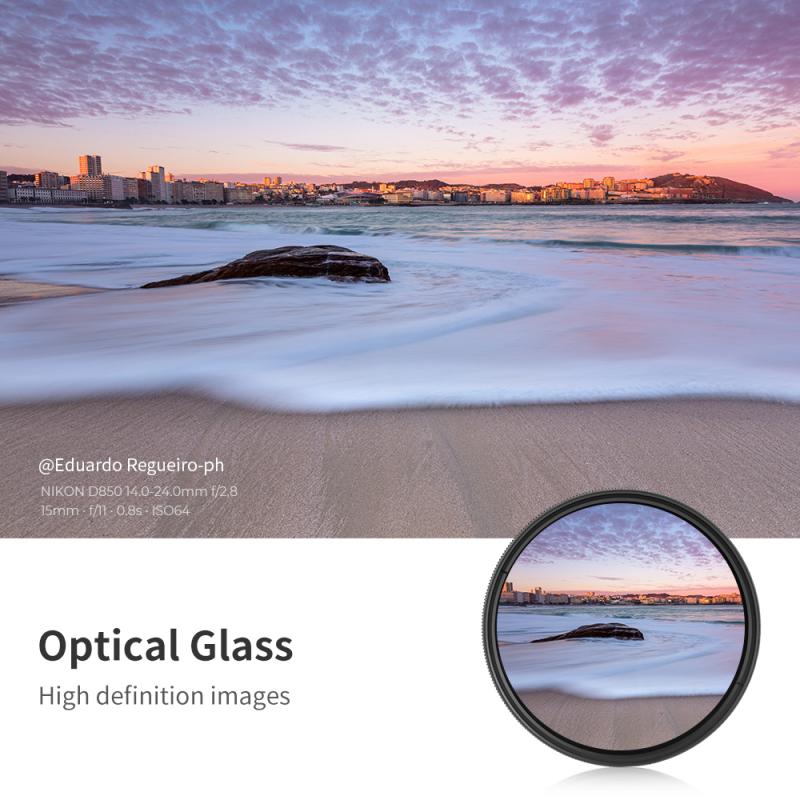
2、 Proper handling and storage of camera filters
Proper handling and storage of camera filters is essential to maintain their quality and prolong their lifespan. Here are some tips to ensure you take care of your camera filters effectively:
1. Handle with care: Always handle your camera filters with clean hands to avoid transferring dirt, oil, or fingerprints onto the surface. Use a microfiber cloth or gloves specifically designed for handling camera equipment.
2. Clean regularly: Regular cleaning is necessary to remove dust, smudges, and other debris that may accumulate on the filter. Use a blower or a soft brush to remove loose particles before wiping the surface with a lens cleaning solution and a microfiber cloth. Avoid using harsh chemicals or abrasive materials that could damage the filter coating.
3. Avoid excessive pressure: When cleaning the filter, apply gentle pressure and avoid pressing too hard. Excessive force can scratch or damage the filter surface, affecting image quality.
4. Store properly: Store your camera filters in a clean and dry environment to prevent dust, moisture, or scratches. Consider using a protective case or pouch specifically designed for filters to keep them safe and organized.
5. Check for damage: Regularly inspect your filters for any signs of damage, such as cracks or scratches. If you notice any issues, it's best to replace the filter to maintain optimal image quality.
It's important to note that the latest point of view emphasizes the use of high-quality filters made from premium materials. Investing in reputable brands and filters with multi-coatings can significantly enhance image quality and reduce the need for excessive cleaning. Additionally, some photographers prefer using lens hoods or lens caps to provide an extra layer of protection for their filters.
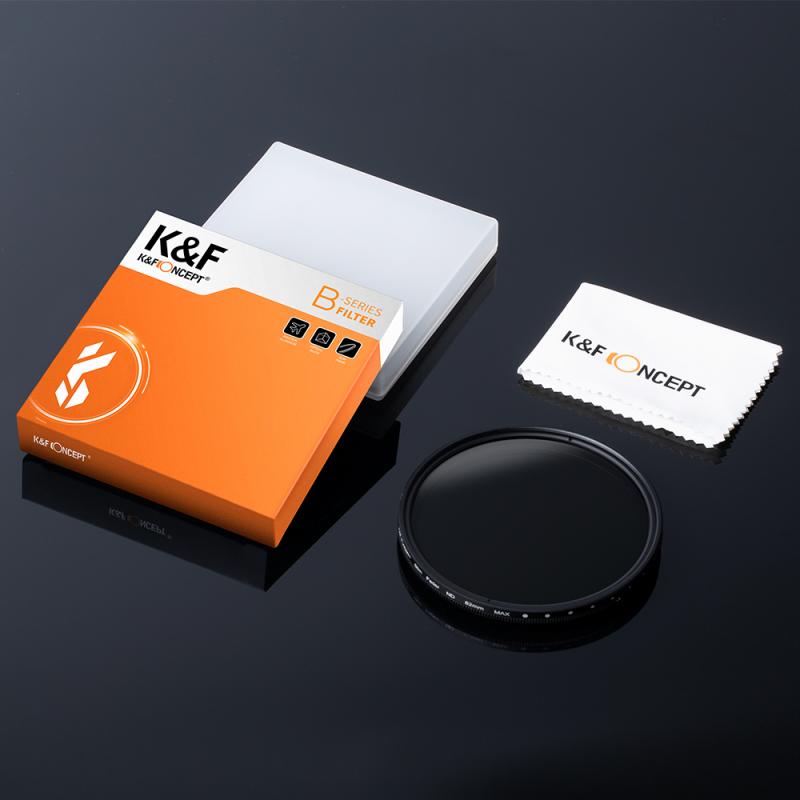
3、 Cleaning methods for different types of camera filters
Cleaning methods for different types of camera filters
Camera filters are essential accessories that help enhance the quality of your photographs. Over time, these filters can accumulate dust, fingerprints, and smudges, which can affect the image quality. Therefore, it is important to clean your camera filters regularly to maintain their effectiveness. Here are some cleaning methods for different types of camera filters:
1. UV and Skylight Filters: These filters are usually made of glass and can be cleaned using a microfiber cloth or lens cleaning solution. Start by gently blowing away any loose dust particles, then use the cloth or solution to wipe the filter in a circular motion. Avoid using excessive force to prevent scratching the glass surface.
2. Polarizing Filters: These filters have a delicate coating that can be easily damaged. To clean them, use a blower brush to remove any loose debris, then use a lens cleaning solution and a microfiber cloth to gently wipe the filter. Avoid using excessive pressure or abrasive materials.
3. Neutral Density and Graduated Filters: These filters are often made of resin or plastic. To clean them, start by using a blower brush to remove any loose particles. Then, rinse the filter under running water to remove any stubborn dirt. Use a mild soap solution and a soft brush to gently scrub the filter, and rinse it thoroughly. Finally, pat it dry with a clean, lint-free cloth.
It is important to note that cleaning camera filters should be done with caution to avoid damaging them. Always refer to the manufacturer's instructions for specific cleaning recommendations. Additionally, consider using a protective case or pouch to prevent dust and dirt buildup when the filters are not in use.
In conclusion, regular cleaning of camera filters is crucial to maintain their effectiveness. By following the appropriate cleaning methods for different types of filters, you can ensure that your filters remain in optimal condition and continue to enhance the quality of your photographs.
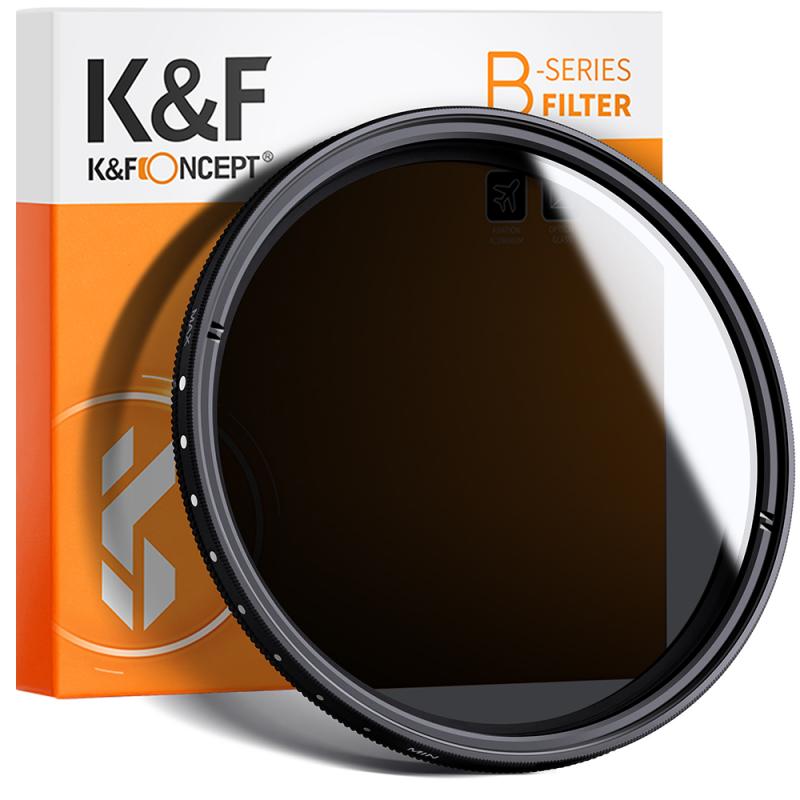
4、 Common mistakes to avoid when cleaning camera filters
Common mistakes to avoid when cleaning camera filters:
1. Using the wrong cleaning materials: One of the most common mistakes is using abrasive materials or harsh chemicals to clean camera filters. This can damage the delicate coating on the filter and affect image quality. Instead, use a microfiber cloth or lens cleaning solution specifically designed for camera equipment.
2. Cleaning too aggressively: Applying excessive pressure while cleaning can scratch the surface of the filter. Always use gentle, circular motions to remove dust and smudges. If there are stubborn stains, try using a lens cleaning solution and lightly dab the affected area.
3. Neglecting to blow off loose debris: Before wiping the filter, it's important to blow off any loose dust or particles. Failure to do so can result in scratching the filter when you start wiping. Use a blower brush or compressed air to remove loose debris.
4. Ignoring the manufacturer's instructions: Different filters may have specific cleaning instructions provided by the manufacturer. It's crucial to read and follow these instructions to ensure proper cleaning without causing any damage.
5. Cleaning filters too frequently: While it's important to keep your filters clean, cleaning them too often can increase the risk of damage. Only clean your filters when necessary, such as when you notice a significant decrease in image quality or visible dirt.
6. Not storing filters properly: After cleaning, make sure to store your filters in a clean and dry place. Using a protective case or pouch can help prevent dust and scratches when not in use.
Remember, camera filters are delicate and can easily be damaged if not cleaned properly. By avoiding these common mistakes and following the manufacturer's instructions, you can maintain the quality and longevity of your camera filters.
